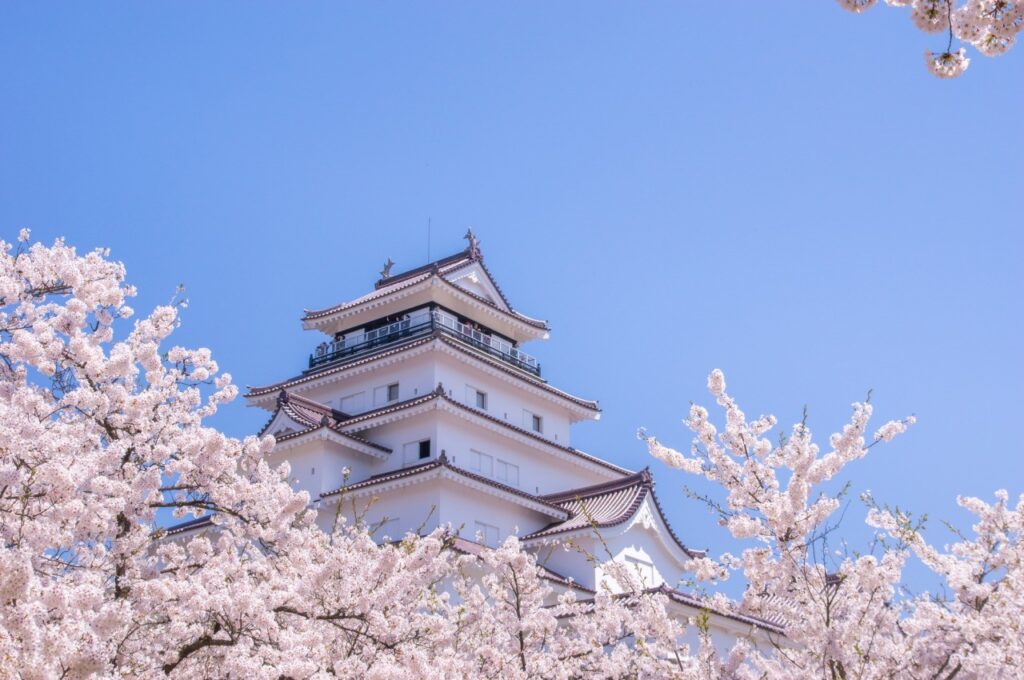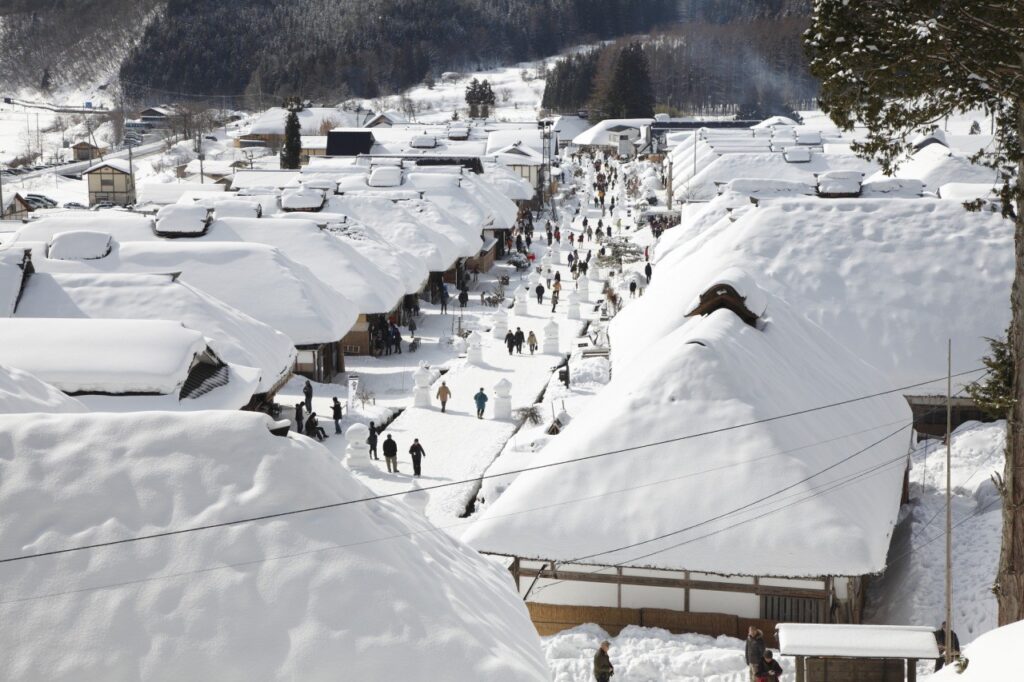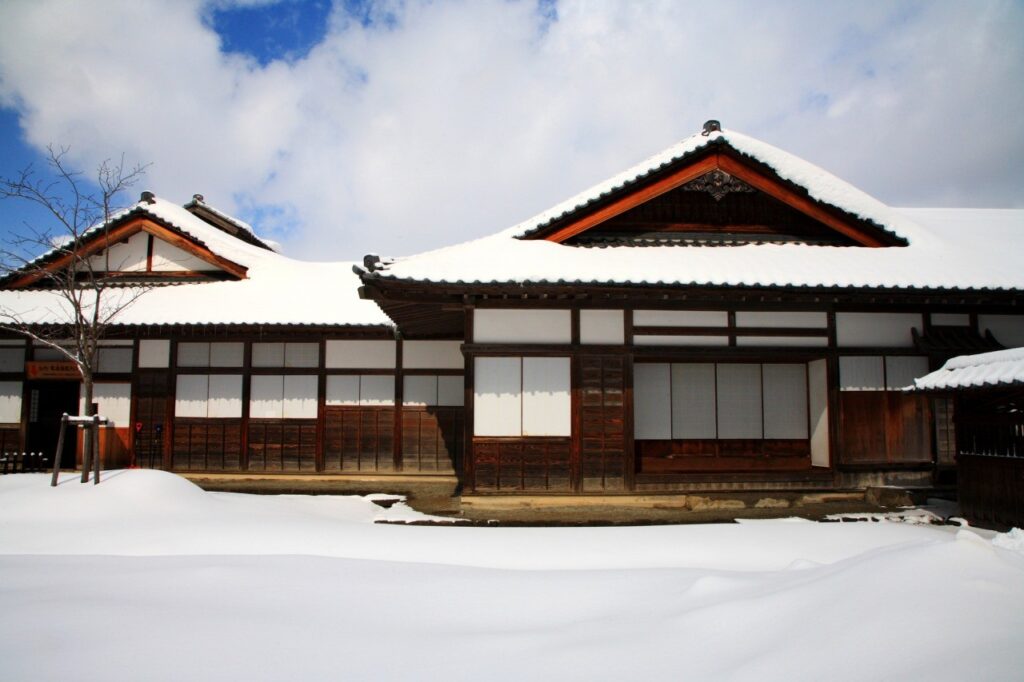Fukushima
Goshikinuma




The lakes and swamps were created by the explosion of Bandai-san, and are called “Goshikinuma” because they change color depending on the season, weather, and viewing angle. Goshiki-numa” is the collective name for a number of lakes, including Bishamon-numa, Akanuma, Midoronuma, Ryunuma, Benten-numa, Rurinuma, Aonuma, and Yanaginuma, and is officially called “Goshiki-numa Lake Group.
Tsurugajo Castle




Also known as “Aizu Castle” or “Aizu-Wakamatsu Castle,” the castle withstood an onslaught by the new government forces during the Boshin War of 1868, and was known as an “impregnable castle” for its ability to withstand a siege for about a month.
Tsurugajo Castle, selected as one of the 100 best castles in Japan, has undergone repeated renovations since its reconstruction in 1965, and in 2011, the “red tiles” that reproduced the 17th century style were replaced, making it the only castle in Japan where red tiles can be seen. The stone walls of the castle tower withstood the great earthquake of 1611 and still look as magnificent as they did in those days.
Ouchi-juku




Ouchi-juku, an inn town that opened around the 17th century, has been selected as one of the country’s important traditional buildings. The streets lined with thatch-roofed houses remind us of the Edo period, and there is also a space where daily utensils and hearths that convey the customs of the time are on display, making visitors feel as if they have stepped back in time.
As you proceed down the main street, you will come to the Ichino-torii (first torii gate) of Takakura Shrine, the village’s Shinto shrine. Passing through the torii gate, you will find yourself in a quiet walking area. If you climb the stairs of the small shrine, you will find a superb spot overlooking Ouchi-juku.
Lake Inawashiro




With an area of approximately 100㎢, it is one of the largest lakes in Japan and looks as if it were an ocean. The lake is characterized by its crystal clear water, and its other name, “Lake Tenkagami,” means a mirror reflecting the heavens.
The lake’s charm is that it can be enjoyed in a variety of ways depending on the season. In spring, visitors can enjoy the magnificent view of Mt. Bandai with cherry blossoms from the lake, and in summer, they can enjoy lake bathing, water sports, and camping. In summer, visitors can enjoy lake bathing, water sports, and camping. In autumn, the lake’s surface is covered with autumn leaves, and in winter, many swans come to the lake.
Bandaisan




Bandai, the centerpiece of Bandai-Asahi National Park and one of the 100 most famous mountains in Japan, offers a 360-degree panoramic view of Lake Inawashiro and the Azuma Mountains from its summit.
Omote-bandai, the south side of Bandai-san, is beautifully shaped and is also called “Aizu Fuji”. Urabandai, on the north side of the mountain, is a remnant of a landslide caused by a phreatic explosion in 1888, and is a strong reminder of the power of Mother Nature.
Aizu samurai residence




This is truly a historical theme park with a collection of relocated and restored buildings centering on the residence of Saigo Yoritomo, a retainer of the Aizu Domain. In addition to the residence of the feudal lord, the park’s expansive grounds are lined with historical buildings, including the “Former Nakahata Jinya,” a relocated and restored Edo period government office, and “Reinan-an Rinkaku,” a restored version of the “Rinkaku” tea house in the Tsurugajo castle’s main citadel.
At the handmade experience center, visitors can try their hand at painting akabeko and carving glass pictures, and there is also a “photo studio” where commemorative photos can be taken wearing costumes from the time period, allowing both adults and children to experience traditional culture while having fun.
